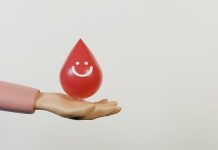
Broken Heart Syndrome, formally known as Takotsubo cardiomyopathy, mimics the symptoms of a heart attack but is distinctly different in its causes and outcomes.
It involves a temporary weakening of the heart’s left ventricle, the main pumping chamber, often triggered by intense emotional or physical stress.
This article reviews the common causes of Broken Heart Syndrome, supported by research evidence, and explains them in a way that is accessible to non-scientists.
The term “Broken Heart Syndrome” comes from the Japanese word “takotsubo,” which means “octopus trap,” referring to the shape of the left ventricle seen in this condition.
This syndrome was first identified in Japan in the 1990s and has since been recognized worldwide. It occurs more frequently in post-menopausal women, though men and younger women can also be affected.
Emotional Triggers: One of the most well-documented causes of Broken Heart Syndrome is severe emotional stress. Events such as the death of a loved one, a breakup, a fierce argument, financial loss, or even a surprise party can trigger this condition.
The exact mechanism is thought to involve a surge of stress hormones, like adrenaline, that temporarily stuns the heart, preventing the left ventricle from functioning properly.
Studies, including those published in the European Heart Journal, have shown that this emotional shock can lead to heart muscle weakness.
Physical Triggers: In addition to emotional stress, physical stress can also lead to Broken Heart Syndrome. This might include acute medical conditions like an asthma attack, a serious infection, significant surgery, or even a physical trauma.
Researchers believe that these physical stressors also cause a surge in stress hormones, similarly impacting the heart’s ability to pump effectively.
Data from the Journal of the American College of Cardiology suggests that nearly 1 in 5 cases of Broken Heart Syndrome is triggered by physical stress.
Neurological and Psychiatric Conditions: There is also evidence linking neurological or psychiatric conditions with an increased risk of Broken Heart Syndrome.
Conditions such as seizures, stroke, or significant psychiatric disorders like depression or anxiety can predispose individuals to this cardiac syndrome. The linkage is again believed to be related to the intense levels of stress hormones produced during these events.
Drug-Induced Causes: Certain drugs can provoke episodes of Broken Heart Syndrome. These include, but are not limited to, epinephrine (used in medical emergencies), duloxetine, venlafaxine (antidepressants), and illegal stimulants like methamphetamine or cocaine.
The stimulatory effect of these substances on the heart and blood vessels can mimic the stress response and trigger the syndrome.
Despite its dramatic onset, Broken Heart Syndrome is usually reversible, with most patients recovering fully within weeks. Unlike a heart attack, the arteries of the heart are not blocked, although the symptoms can be just as severe.
Treatment typically involves medications that relieve the workload on the heart while it recovers, similar to treatments for heart failure or heart attack.
Preventive measures for Broken Heart Syndrome involve managing stress through techniques like mindfulness, meditation, regular exercise, and counseling. For individuals with a history of this syndrome or at high risk, avoiding known triggers and managing stress are crucial.
In conclusion, Broken Heart Syndrome is a fascinating condition that highlights the powerful connection between our emotions, physical health, and well-being.
Understanding its causes helps not only in managing the syndrome but also in appreciating the profound ways that our bodies respond to the stresses of life.
If you care about heart health, please read studies about how eating eggs can help reduce heart disease risk, and Vitamin K2 could help reduce heart disease risk.
For more information about heart health, please see recent studies about how to remove plaques that cause heart attacks, and results showing a new way to prevent heart attacks, strokes.
Copyright © 2024 Knowridge Science Report. All rights reserved.



